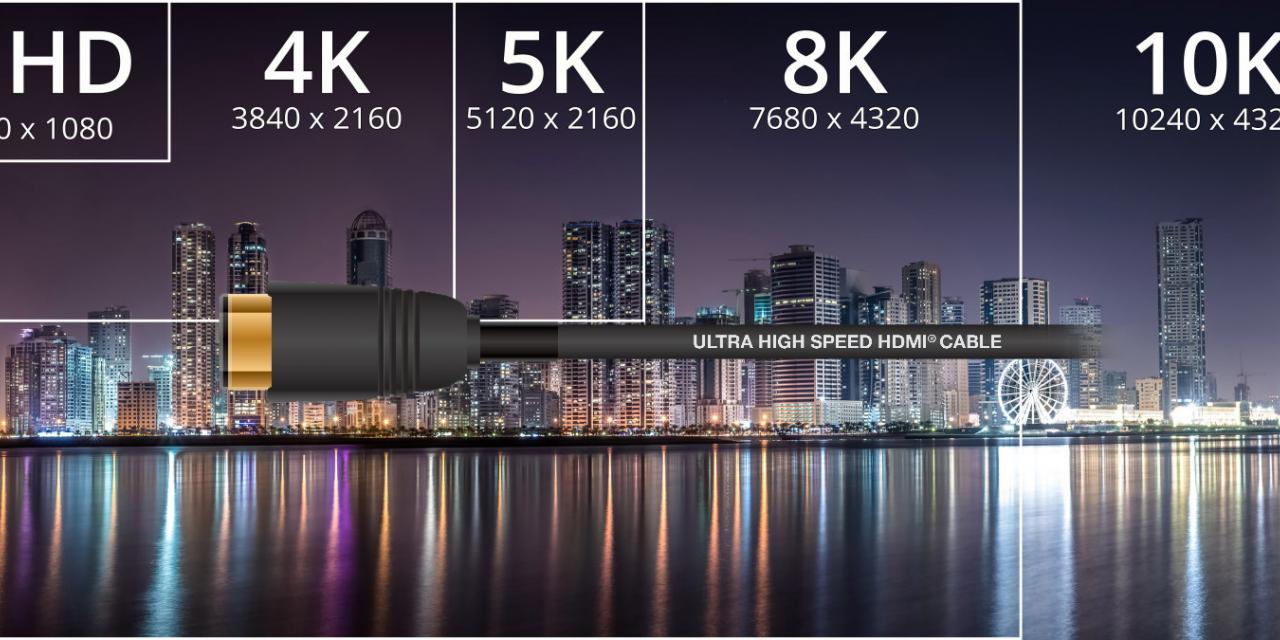
Along with the price, building a high-end gaming rig can be a little problematic for one key reason: cabling. You can't run 4K resolution or 120Hz displays over a traditional HDMI cable, or even an HDMI 1.4 cable. For that you need DisplayPort, but even that has its limitations. Fortunately, a new generation of HDMI, known as 2.1, will make it possible to run just about anything you want.
Although the world is still moving slowly towards 4K resolution, there are manufacturers out there releasing 8K screens and looking to the future, perhaps even beyond that. HDMI 2.1 is designed to handle all of it. Its new as being capable of running at up to 10K resolution, while still outputting at 120Hz.
That's all well and good, but at this time it's pretty redundant. As PCGamer points out, graphics cards of today, even the top-end ones, can't even support 10K resolution, let alone output anything in it at 120 frames per second. Trying to run 10K at that kind of refresh rate would be 13 times more taxing on a system than a single 4K display at 60 frames per second, or 55 times more complicated than a 1080P display at the same frame rate.
That's a hefty enough leap that we shouldn't expect to get there for many years to come. Although graphics cards are still becoming faster every year, they aren't making monumental leaps, especially with the lack of competition AMD is providing Nvidia - the incentive isn't there. It's possible that it could take up to a decade for HDMI 2.1 to have its specifications properly utilized.
Perhaps a blend of foveated rendering, multiple-GPU setups and some sort of leap-frogging advancement will contract that timescale, but it doesn't seem likely on current trajectories.
More likely HDMI 2.1 will be utilized as an alternative cabling for 120Hz 4K gaming over the next few years.
Image source: HDMI Forum








